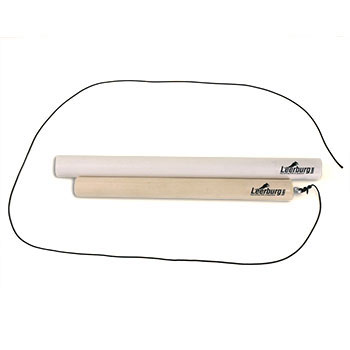May 17, 2011
Is the dominant dog collar an appropriate tool for corrections while training heeling?
Full Question:
Hello Cindy,Question: If I am training heeling and a correction needs to be made while we are walking, is the dominant collar an appropriate tool and will it allow me to give enough of a correction to get the dogs attention or do I need a muzzle with the prong? If the muzzle is the answer, can you help me with the correct size the dog is 13 mths and 110 lbs.
History:
I have a male Black Russian Terrier that I am taking through obedience training. He is doing well in training, however he is a little stubborn and when given him a strong correction with the prong collar he gets aggressive. I have just about all your videos including the one on dominant dogs, however unless I missed it the dominant dog collar is mostly effective in a static situation.

 Cindy's Answer:
Cindy's Answer:
If your dog is getting aggressive with you for a prong collar correction, a couple of things may be going on. He may be getting over stimulated by the prong collar, you may be unfairly correcting him when he doesn’t really understand what the correction for, he is too distracted, OR you may be overcorrecting him. (Giving him a harder correction than is warranted.)
I don’t believe that dogs are stubborn, I believe that we aren’t either interesting enough or motivating enough if a dog doesn’t appear to want to do what we want to do. Many dogs appear to be stubborn or disobedient when in fact they simply don’t understand what we expect. Is your dog engaged with you during training? If you are using corrections to “get the dogs attention” then I think you need to back up and work on engagement. Corrections should not be used to get attention, they should be used in the proofing phase when the dog doesn’t comply with something he absolutely understands and is choosing to disobey.
Your dog is quite young, and I think I’d back up and go back to review the Ellis DVDs on Food, Tug and Heeling. You may simply be pushing him a bit too fast and adding corrections before it’s fair.
A dominant dog collar is best used for issues of aggression or overexcitement.
If you decide you need a muzzle, we have directions on how to measure the dog for a muzzle on this page. We need measurements of him nose and muzzle length to help you choose the correct size.
I hope this helps.
Cindy Rhodes
I don’t believe that dogs are stubborn, I believe that we aren’t either interesting enough or motivating enough if a dog doesn’t appear to want to do what we want to do. Many dogs appear to be stubborn or disobedient when in fact they simply don’t understand what we expect. Is your dog engaged with you during training? If you are using corrections to “get the dogs attention” then I think you need to back up and work on engagement. Corrections should not be used to get attention, they should be used in the proofing phase when the dog doesn’t comply with something he absolutely understands and is choosing to disobey.
Your dog is quite young, and I think I’d back up and go back to review the Ellis DVDs on Food, Tug and Heeling. You may simply be pushing him a bit too fast and adding corrections before it’s fair.
A dominant dog collar is best used for issues of aggression or overexcitement.
If you decide you need a muzzle, we have directions on how to measure the dog for a muzzle on this page. We need measurements of him nose and muzzle length to help you choose the correct size.
I hope this helps.
Cindy Rhodes
96% (22 out of 23)
respondents found this answer helpful


Can't find what you're looking for?







